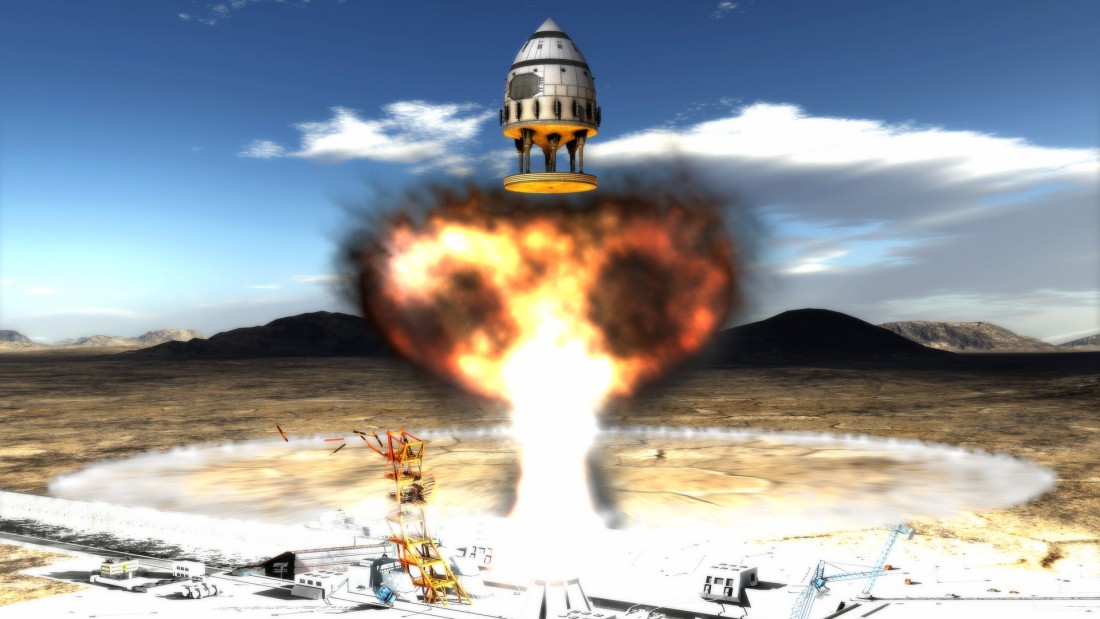In the late 1950’s and early 1960’s the US was in the midst of the cold war. At that point, the American space program had fallen far behind Soviet rocket technology. Desperate to upstage the Soviets, the US began to pour funding into seemingly crazy technological research. One of these projects being Project Orion.

In essence, Project Orion aimed to blast a rocket into space by exploding nuclear bombs beneath the vessel. Through the use of dense radiation shielding and shock distribution systems, the vessel would remain intact as it dropped a continuous flow of explosives behind it. To this end, this type of rocket was theorized to be able to travel at a significant percentage (0.3-10%) of the speed of light. For this reason, the Project Orion was considered for use in long distance space travel.
Although a large scale nuclear blast propelled rocket could potentially function well on paper, a full scale design has never been tested due to several impracticalities. From an environmental standpoint, the launch of such a rocked would require the detonation of several nuclear warheads within the earth’s atmosphere. This would lead to localized radiation of the surrounding environment. From a engineering standpoint, the back plate of such a rocket would have to be able to withstand hundreds nuclear blasts while dampening the the shock of sudden acceleration. Historically, research into Project Orion was ceased after the Partial Test Ban of 1963, a measure to help ease tension in the cold war.
While a large scale nuclear propelled rocket has never been created, it remains to be one of the only propulsion systems capable of moving a sizable craft to significant fractions of the speed of light.